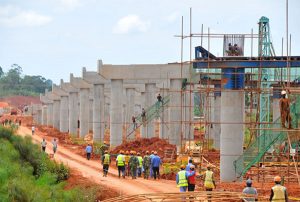Purchasing properties for investment is one of the most popular methods in increasing your net worth and building wealth. Unlike other methods of investment, houses or properties cannot be moved, and therefore, location matters a lot. Geographical, societal, and economical factors all play a role in determining the value of the location, and therefore, the value of your properties. Location is arguably the most important factor when it comes to purchasing a property for investment. There are several common factors that could be observed when it comes to evaluating a region or a city for real estate investment.

It’s important to note that everything is linked. The aspects of value should always take into account aspects of human life. Things such as employment, population growth, city developments, and a wide variety of factors all play a role. Observing the market as a society a whole is key. Let’s start with some of the common factors in evaluating a city for real estate investment.
Employment growth
People’s capability to purchase or rent is highly dependent on their financial state that determines their capability of buying. Companies and businesses that grow are signs of an area that flourish. The growth of the percentage of the city’s number of employment each year is indicative of employment growth that often affect the real estate market greatly.
Population growth
The increase in population is something that clearly has a direct impact in the housing market. The population growth is observed annually, viewing the percentage in the city’s population each year. Migration trend is something to look out for.
Infrastructure development
An intrinsic sign that a city or a region is growing financially is changes on its infrastructure brought about by development. You may spot roads being built, or a brand new bridge just finished constructing, or even just several new houses in the neighborhood, that may indicate a high demand in housing in the area.
Rental Yield
Compared to the property’s market value, the profit of how much rental pays is a direct indication of how much an investor could obtain rental income. Rental prices may not always reflect home prices in many areas, so make sure to do your research and find out, and possibly observe what may affect the trend. Regions with a high populations of students or young workers are sometimes the cause of the high rental yield. Not to mention, due to inflation, although home prices grow slowly, rent prices may increase rapidly due to inflation. Rental and home family markets sometimes can be very disconnected.
Increase in home values
The increase in home values is observed through how long it would take for home prices to go up each year. The median value of the inventory in the housing market is commonly observed. The length of time homes are on an active listing is one of the indications in the speed of home value. The overall factors affect the resale value of a house.
Economic diversity
While employment growth plays an important role in the state of the real estate market, economic diversity may just be as important. Economic diversity is observed through employment rates across a wide range of sectors, as opposed to a region dominated by a single industry. Places with only a sole industry dominating the region pose higher risks in the long run. Regions with a diverse economic sectors are much less risky, especially those with established industries. The examples of economically diverse cities are California, Texas, Sacramento, etc.